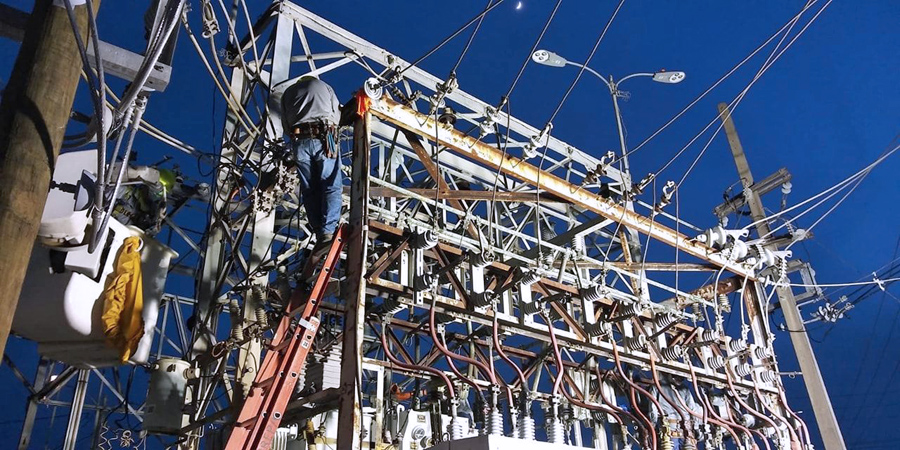Op-Ed: Now is Puerto Rico’s chance to rebuild resilient infrastructure

Infrastructure is at the top of our minds year-round in Puerto Rico. We’ve witnessed how failures in our infrastructure impacted our public health and safety after Hurricanes María and Irma tore through our hometowns in 2017.
In this decade alone, we’ve experienced multiple infrastructure-related crises produced by extreme drought, poor drinking water/reservoir management, solid waste/landfill issues, coastal erosion, and, a failed electrical grid.
We’ve been through earthquakes and Category 5 hurricanes — all on top of the recent crisis of the COVID-19 pandemic. Each time these natural disasters hit our island we rebuild. But that is not enough. It shouldn’t take a disaster to spur action.
We have an opportunity now to build strategically to make our infrastructure resilient. But we cannot go at it alone – we need the central and federal government to step up to the plate. And we are grateful to finally see some positive progress.
Last week, the Trump administration announced nearly $13 billion in aid to Puerto Rico to help us rebuild our electrical grid and repair our ailing schools. $9.6 billion of these funds will help the Puerto Rico Electrical Power Authority replace transmission and distribution lines, power substation systems, offices, electrical substations, and modernize parts of the grid.
This has been the only break we’ve had in almost half a decade. And here is why the situation here has looked so bleak. This good news comes on the heels of Democratic presidential nominee Joe Biden’s new plan for Puerto Rico’s recovery, which highlighted the American Society of Civil Engineers (ASCE) first Report Card for Puerto Rico’s Infrastructure, which gave the island a ‘D-,’ as the main component to rebuilding Puerto Rico’s infrastructure using our recommendations.
ASCE gave out its first ‘F’ grade for energy, meaning our energy infrastructure has failed, with Hurricanes Irma and María having destroyed much of the electric grid in 2017 — causing the island to experience the longest blackout in American history and the second-longest blackout across the world.
As many of us had to experience firsthand, 12 months after the storms, people were still left without power. Unacceptable.
But the failure of the grid did not start in 2017 — our grid was already in disrepair, experiencing frequent outages. We have reached the point of total failure with our electric grid, and short-term fixes will not bring it back to life.
Today’s network is fragile, and blackouts are frequent. Operational capacity in the system dropped to 57% in October 2019 as a result of inadequate maintenance practices.
The lack of a reliable energy infrastructure today is greatly impacting human life and commerce, contributing to continued economic hardship and ever-growing financial crisis.
So, what else besides funding should be done to restore our electric grid, and modernize it for the 21st Century?
Boost infrastructure resiliency
One of our report’s recommendations was to increase the resiliency of our infrastructure. When we rebuild, it cannot be using the same methods as before. Our future depends on the ability of our infrastructure to not only protect us against increasingly severe storms, but to facilitate timely emergency management, response, and recovery efforts after a major event.
We can improve the resiliency of our networks by requiring the central government, municipalities, and industry build to consensus-based standards to strengthen utility poles and other infrastructure, incorporating life-cycle cost analysis into projects, and by maintaining our existing assets.

Industry standards provide design guidelines tailored to Puerto Rico’s weather and hazard conditions, but unfortunately energy utility companies usually use other design guidelines that are cheaper. However, ASCE design guidelines are a proven method to build an energy grid more resilient.
If legislation starts incorporating ASCE’s standards and our recommendations, we will be ready when the next hurricane hits. Further, recovery after the storm can be a fraction of the time and money. After all, taking these actions will extend the useful life of our assets and decrease costs in the long-term.
The future does not have to look this bleak. Puerto Rico has an opportunity now by developing an island completely resilient and sustainable. However, this can only be achieved if we incorporate the ASCE Standards and recommendations presented in our Report Card.
We thank leaders in Washington for taking this first step.













Right on! How do the ASCE standards differ from the RUS standards?